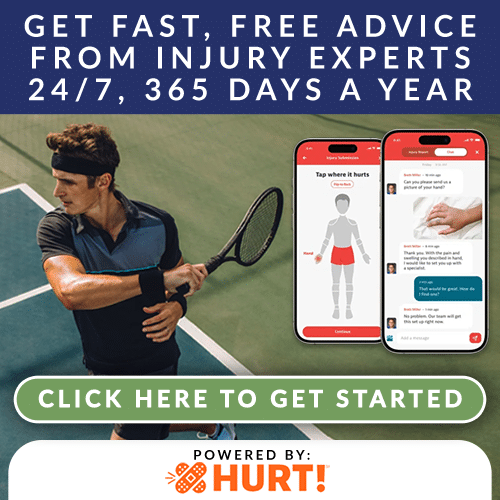Rheumatoid Arthritis (RA) is the most common form of autoimmune inflammatory arthritis, with over 1.5 million Americans affected by this disease. Most RA sufferers will develop initial onset of joint pain, stiffness, and swelling after age 35. However, RA can develop at any age. RA occurs at a much higher incidence among women, with 3-fold higher rates of RA seen in females versus males. Cigarette smokers and those with a known family history of RA also have an increased risk of developing the disease.
RA is defined as an “autoimmune” disease because the body’s own immune system somehow goes awry and begins to recognize certain self or native cells inside of joints as being foreign. This faulty immune response begets further activity from several types of pro-inflammatory cells which perpetuate this self-attack upon the lining of joints, or synovial tissue. This chronic inflammation leads to swollen appearing joints and eventual deeper destruction of cartilage and bone within the joint. When this active inflammation is left untreated, adjacent tendons and ligaments that help provide joint structure may also become stretched and injured. In this way, untreated RA patients may develop deformed, misaligned joints with a wide range of disability. RA most commonly presents as a symmetric (affects similar joints on both sides of your body), polyarthritis (> 5 joints) with a pattern of waxing and waning symptoms that have lasted a minimum of 6 weeks to be considered a “chronic” arthritis. The small joints of the hands/wrists and feet/ankles are typically the first to be involved with larger joints (knees, shoulders, elbows) usually flaring up later in the course of the disease.
In addition to noticed swelling, tenderness and/or warmth over joints, a pattern of morning stiffness that lasts >1 hour over multiple joints may be an important early clue in RA. Other RA related symptoms may include fevers, fatigue, weight loss, dry mouth/dry eyes, and small lumps under the skin called rheumatoid nodules.
RA is not only a self attack on joints. When left untreated, RA may evolve to include several organ systems with a multitude of complications. Nearly 20% of RA patients will go on to develop moderate to severe dry eye symptoms called “keratoconjunctivitis sicca”. A much smaller percentage will develop inflammatory eye conditions such as scleritis, iritis, uveitis. RA may also involve the lungs. Small rheumatoid nodules and areas of deeper lung tissue damage called interstitial lung disease may lead to breathing trouble. During very active stages of inflammation, some RA patients may also develop fluid collections around the lung called pulmonary effusions. Similarly, collections of inflammatory fluid can also collect around the heart as cardiac effusions in RA patients. Studies have also shown that due to chronic inflammation effects, people with RA have up to twice the risk of developing heart disease.
RA symptoms can evolve gradually over many weeks or months which makes accurate diagnosis especially challenging. Moreover, there are many conditions that may behave very similar to RA such as Lyme disease, parvovirus related arthritis, and other types of autoimmune inflammatory arthritis ( lupus arthritis, psoriatic arthritis, reactive arthritis). Thus, if rheumatoid arthritis is suspected, patients should be referred for a thorough evaluation with a rheumatologist. Proper diagnosis of RA can be made with a combination of lab testing, x-ray imaging studies and a detailed physical examination. Rheumatologists will examine small joints for signs of swelling and inflammation called synovitis, and/or evidence of larger joint fluid collections called joint effusions. Characteristic lab findings include mild anemia, elevations in general inflammatory markers in the blood (ESR, CRP level), and/or an elevated rheumatoid factor and/or a positive anti-cyclic citrullinated peptide antibody (anti-CCP Ab).
Early in the course of RA, imaging studies may appear normal or show only early signs of inflammation without overt erosions or deep bone and cartilage damage. It is important to track symptomatic joints with interval follow-up x-rays to help monitor for disease progression and response to any treatments. Joint destruction or irreversible bone erosions usually occur in the first two years of active disease that goes untreated. Therefore, a timely diagnosis and a suitable treatment plan are paramount in order to avoid permanent joint damage, surgical interventions and future disability.
There are a plethora of available treatments for RA patients, ranging from conservative to aggressive [ see table ]. Customized treatment plans should be discussed and designed on an individual basis. Treatment response can vary significantly from person to person and many patients may need more than one medication to control symptoms. After early diagnosis and proper treatment, RA patients should be able to exercise regularly and face minimal to no long term disease consequences. The short term goal of RA treatment is to eliminate joint pain, swelling and stiffness. The long term goal is to prevent joint deformity and promote “remission” of disease so that patients have cessation of troubling RA disease flares for as long as possible. In conjunction with RA medications, staying fit with lower-impact aerobic exercise and a regular weightlifting helps RA patients to lessen stress on joints.
REFS:
- Graudal NA, Jurik AG, de Carvalho A, Graudal HK. Radiographic progression in rheumatoid arthritis: a long-term prospective study of 109 patients. Arthritis and rheumatism. 1998 Aug;41(8):1470-80.
- Sacks JJ, Luo YH, Helmick CG. Prevalence of specific types of arthritis and other rheumatic conditions in the ambulatory health care system in the United States, 2001-2005. Arthritis Care Res (Hoboken). 2010 Apr;62(4):460-4.

